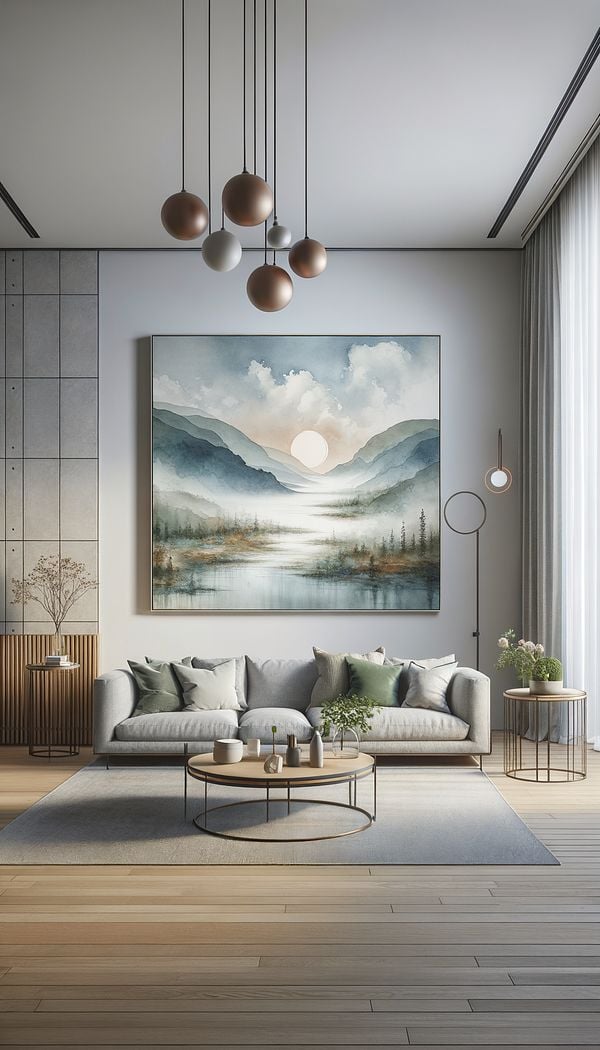What is Watercolor?
Watercolor is a painting method in which color pigments are suspended in water-based solutions.
Description
In the context of interior design, watercolor refers to a painting technique used to create artworks with color pigments dissolved in water. Watercolor paintings are known for their transparency, fluidity, and the way they capture light, making them a popular choice for adding a soft, ethereal quality to a room's decor. This medium allows artists to achieve a wide range of effects, from delicate washes of color to vibrant, saturated hues. The unique qualities of watercolor can introduce an element of artistic expression and sophistication to any space.
Watercolor art can be incorporated into interior spaces in various forms, including original paintings, prints, and even as patterns on textiles and upholstery, wall treatments and finishes, or decorative objects. The versatile nature of watercolor makes it suitable for various interior design styles, from traditional to modern. Its ability to blend seamlessly with different elements and themes allows for its wide application in enhancing the aesthetics of a room.
Furthermore, watercolor art can evoke different moods depending on its color palette and subject matter, from serene landscapes to vibrant abstract pieces. This makes it an excellent tool for designers looking to create a specific atmosphere within a space. Whether used as a statement piece or as part of a larger collection, watercolor art adds a unique, personal touch to interior decorations.
Usage
Watercolor is commonly used in interior design to create a focal point within a room, serve as visual storytelling elements, or achieve desired emotional effects. For instance, a serene watercolor landscape can add a calming effect to a bedroom, while a bold, abstract watercolor piece can inject energy and modernity into a living space. Furthermore, watercolor can be found across various decor items such as cushions, wallpapers, and even ceramics, adding a touch of artistic flair to everyday objects.
FAQs
-
How do I preserve watercolor art in my home?
To preserve watercolor art, it's important to keep the artwork away from direct sunlight, frame it under UV-protected glass, and consider a high-quality, acid-free matting to prevent fading and moisture damage. Regular dusting and ensuring a stable environment with minimal humidity also help maintain watercolor art's vibrancy.
-
Can watercolor art fit in any interior design style?
Yes, watercolor art is versatile enough to fit into various interior design styles. Its broad range of expressions, from soft pastel washes to bold, vibrant strokes, can complement traditional, contemporary, and even minimalist decors, depending on the artwork's subject and color scheme.
-
Are there eco-friendly options for incorporating watercolor in interior design?
Absolutely! Look for watercolor prints made on recycled or eco-friendly paper, or consider purchasing original watercolor art from local artists who use non-toxic, sustainable materials. This approach supports both the environment and the art community.
Practical Application
To incorporate watercolor elements into your interiors effectively, start by selecting artwork or decor items that resonate with the overall theme and color palette of your space. Consider the mood you wish to evoke—whether it’s calmness, vibrancy, or sophistication—and choose watercolor pieces that reflect this. Complement watercolor artwork with subtle, neutral backgrounds for a standout effect, or integrate watercolor patterns across soft furnishings for a cohesive look. Remember, the beauty of watercolor art lies in its fluidity and variation, so embrace these qualities to enhance your interior designs.
-
Decorative Techniques322 articles
-
Decorative Objects240 articles
-
Color & Patterns154 articles
-
Textiles & Upholstery252 articles
-
Wall Treatments & Finishes157 articles
-
DecoupageDecoupage is a decorative technique where cutouts are glued to a surface and then varnished.
-
Queen AnneAn architectural and furniture design style that originated in the late 17th and early 18th centuries, characterized by its elegant and ornate features.
-
European StyleEuropean style refers to a diverse blend of design influences from various countries across Europe.
-
AubussonAubusson refers to a specific type of French flat-woven tapestry or carpet.
-
Modern StyleModern style in interior design refers to a design movement that emphasizes simplicity and function, incorporating sleek lines and a minimalist aesthetic.
